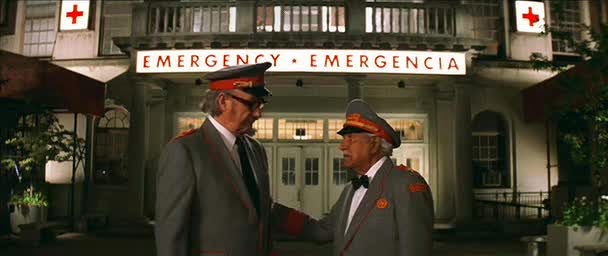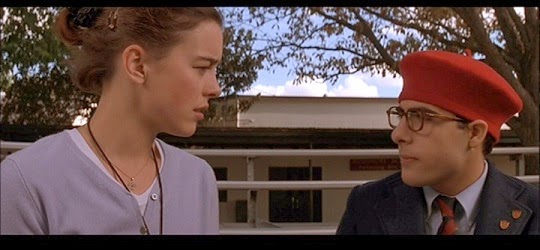Factual Programmes are made with different types of issues, that the director needs to keep track of throughout the production of the Factual Programme. These issues are; Accuracy & Balance, Impartiality, Objectivity & Subjectivity, Opinion, Bias, Representation and Privacy.
A factual programme is exactly what it says, a programme stating facts about a certain subject which means that the audience will be watching expecting to learn something and find out facts and stats about the subject which means that the director must deliver, this is known as a "Contract with the viewer" which is an unwritten contract from director to audience that they will deliver what they say they will. Ofcom is an organisation which makes sure that aired programmes are real and will not scam, harm or mislead an audience. This is for the benefit of the public and not for commercial purposes.
Accuracy
Accuracy is when something is as close and precise to the truth as it can be. This is a big factor in the 'contract with the viewer' because it means that the audience will be learning what they were expecting to learn at the start of the programme. In order for factual programmes to be accurate, a lot of careful research must be done to know that the facts are true. If a factual programme is found out to not have accurate facts the production company and/or director will lose the trust of their audience.
An example of an accurate Factual Programme is The News: http://www.bbc.co.uk/news/
I chose The News because it is a factual programme that has a huge audience and must be trustworthy. The News tells facts about current news around the world so must be reliable which is also means they must do careful research of the subjects they talk about to know they aren't telling their audience false information. News reporters/presenters read from a script or teleprompter and have to be unbiased with only few acceptations. The News can sometimes be biased when they do interviews and vox pops because they answers they get may be one-sided.
Balance
Balance is when an argument or discussion is kept equal in factual and isn't biased. Both sides of an argument should be said equally an not more one than the other. For an argument to have balance the interviewer/host doing the debate must be impartial.
My example of a balanced factual argument is from "The Big Question" with the discussion 'Is the Bible still relevant?':
Impartiality
Impartiality is when a director or producer don't take any sides in the subject they are doing about and stay neutral. Being impartial means not being biased and as a producer host a discussion but don't get involved in the answers or push the interviewee/s to say a certain answer.
My example of an impartial factual programme is "David Icke: Was he right?":
Objectivity
Objectivity is when the programme is based solely on observation. It doesn't involve anything emotional and the audiences reactions come from what they see not what they are being told. To be objective means getting your point across using all the research you have gathered, and not giving your opinion whether it's biased or impartial. It means that the audience isn't fed an opinion, they instead make their own from what they're seeing and learning.
My example for an Objective Factual Program is "Man On Wire":
https://www.youtube.com/watch?v=3gs8ZcwGrOU
I chose this because it shows us re-enactments and rare footage of Phillipe Petit preparing to tight rope over the World Trade Centres and doing the tight rope over them. It has interviews with Phillipe's friends but we never get an opinion from the director or narrator they just tell his story as it is being shown.Subjectivity
Subjectivity is when the director or producer make the subject based on their own opinion. They don't care to show footage or facts to show their opinion so keep it to themselves to try and make the audience think the same way they do and not have another opinion on the subject. Subjective Factual Programmes are highly biased.
I couldn't pick just one documentary for Subjective so went with Filmmaker Michael Moore who has made Documentaries such as:
- Sicko
- Fahrenheit 9/11
- Capitalism: A Love Story
- And many more....
Opinion
Opinions are based on your own individual thoughts on something. Opinions aren't always based on facts, opinions instead are based on arguments. This is where you can find conflict in opinionated factual programmes because everyone has different opinions on most things.
My example of an Opinionated Factual Programme is "The Obama Deception":
Bias
Bias is when a director picks one side of an argument and documents on them. Being biased is a very unfair way to document, especially to a passive audience because they will take in what they're being told and not give it a second thought. Biased also means not giving any information or evidence at all of the other side of the argument and only doing the side you support.
My example of Bias Factual Programmes is one of Michael Moores "Bowling For Columbine":
Representation
Representation is when a subject is shown in a particular way. This is similar to biased as the director is trying to represent the subject in a certain way whether positive or negative. Positive representation is done so the audience feels sympathy towards the subject and negative is used to make a villain of what is being represented.
My example for this is Catfish:
I chose this because when we first meet Angela they represent her in a crazy way but as we find out more about her they represent her in a more sympathetic way.
Privacy
Privacy in factual programming is an important factor. Everyone has a right to privacy if they don't want something to be seen or don't want to be recognised in a production they have a right to that. Keeping interviewees private in an interview for a factual can be done by; changing the voice of the person, blurring their face, only showing the back of them or blacking them out.
My example for this is only showing the back of them: http://www.bbc.co.uk/news/uk-northern-ireland-27784852
I chose this because a victim of racist assault was interviewed and asked to stay anonymous and the News did as he asked as it is a right to privacy.
The Animal Man
My Documentary is about pets being abandoned and how my Dad has helped some in and out of work. My documentary will have Representation as I will be representing my Dad in a heroic manner. It will also have opinions on what the public think about animals that are abandoned and family and friends will have opinions on how they feel about my Dad and the animals he helps.













































